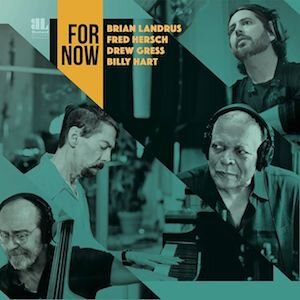Label: Self released, 2020
Personnel - Tomchess: oud, ney, morsing; Zach Swanson: upright bass.
Ghost Narratives is a collaborative work between multi-instrumentalist Tomchess and bassist Zach Swanson. Having played together in different contexts, these two improvisers first met when Tomchess was searching for a bassist to play in Nima Farzeneh's No-Lands Band.
The music on this recording results from their duo sessions at Tomchess’s apartment between 2018 and 2019, and combines traditional Arab music and free improvisation. The gorgeous melding of their instruments can be heard throughout and, while tones can easily change from smooth to barbed, the intensities keep ranging according to their whims.
“If Going Again” opens the record by probing experimental ways that are also very communicative. The sparseness of the bass plucks contrasts to the oud requests before settling into a more specific groove, becoming percussive by the end. The erratic gravity exerted by the oud is also noticeable on “Liberation of the Mirror”, where shades of light and dark coexist. Swanson sets the mood, which doesn't hamper him from exploring new routes in the accompaniment, while Tomchess, in certain passages, nearly evokes the eloquence of flamenco through flurries of notes sequenced with chromatic invention.
However, my favorite pieces are “Tapestry of Evidence”, where the duo drops down into a dark shimmer before leading their instruments into a contrapuntal dance, and the title cut, a flexible conjugation of Eastern classical moods where the musicians alternate roles as the leading voice and accompanist. Amidst pensive reflections and racing progressions, there are well-defined cadences.
The main problem with this album is the extended length of the tunes, with the monochromatic soundscapes lingering in the same state for too long. Nonetheless, each piece reflects the enthusiasm of these musicians for improvisation and free form. The nearly 19-minute “The Innocent River” is more cinematic and no less tense either. Tomchess plays ney, a typical flute from the Middle East, as well as morsing, an instrument commonly associated with Carnatic Indian music. Vocals are also added as a percussive element.
Ney also appears at the center of “Wilderness Harmony”, where Tomchess takes the bulk of the lead by throwing beseeching chants. Yet, Swanson’s woody bass plucks stand out, complemented with feathery harmonics, robust two-note intervals, and keening arco laments.
It’s a long road, but totally rideable for lovers of improvised music and alternative sonorities.
Grade B-
Favorite Tracks:
02 - Liberation of the Mirror ► 05 - Tapestry of Evidence ► 07 - Ghost Narratives










































